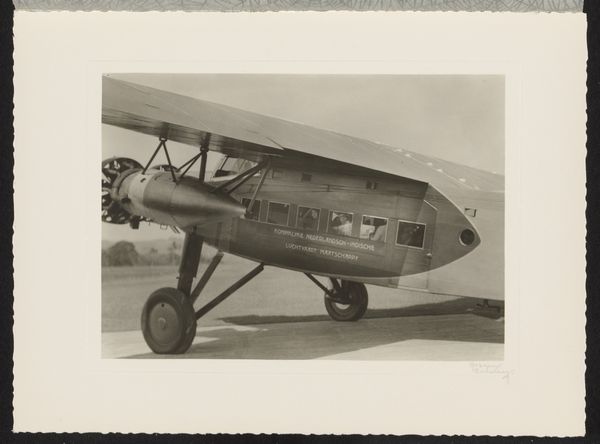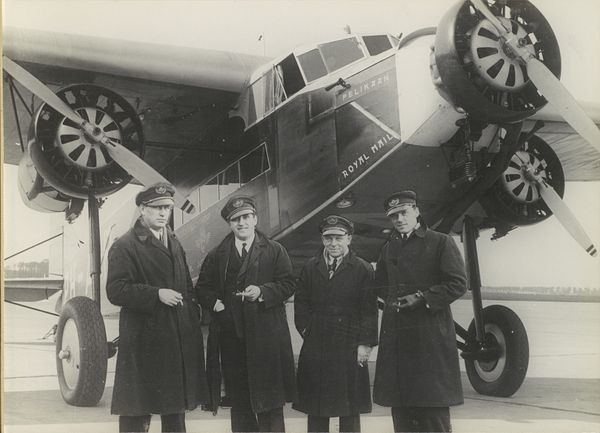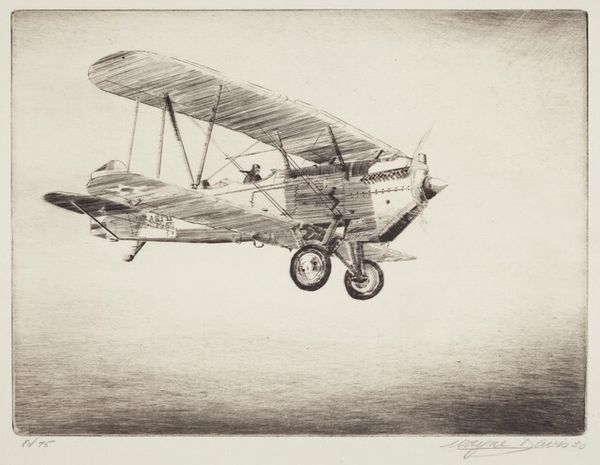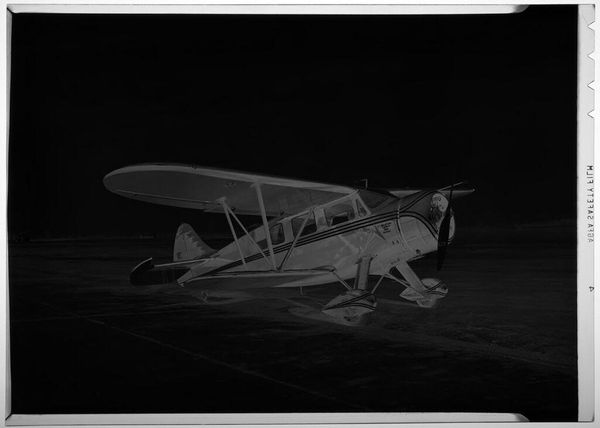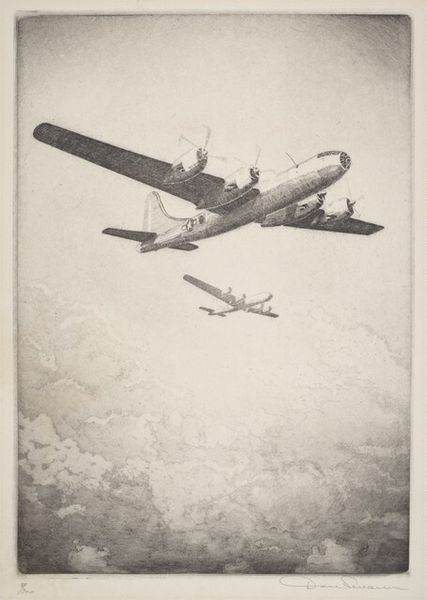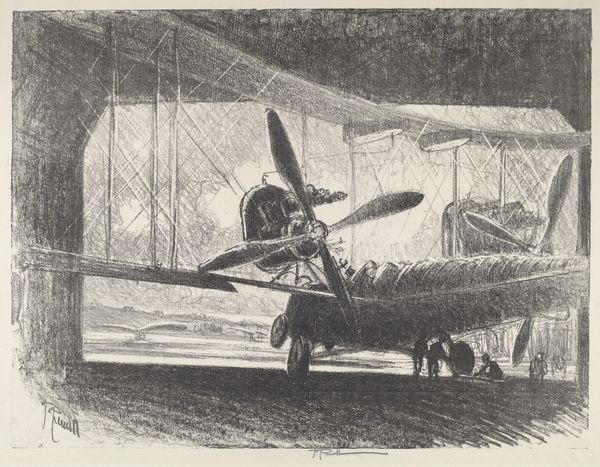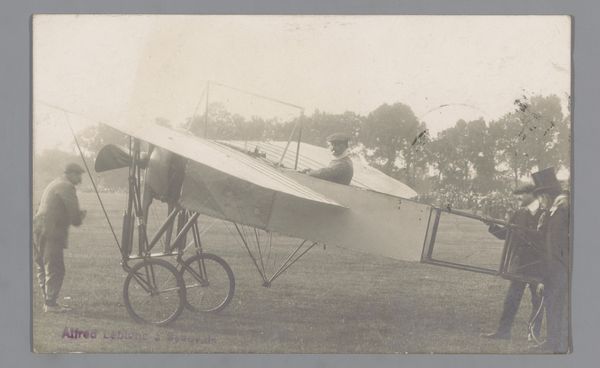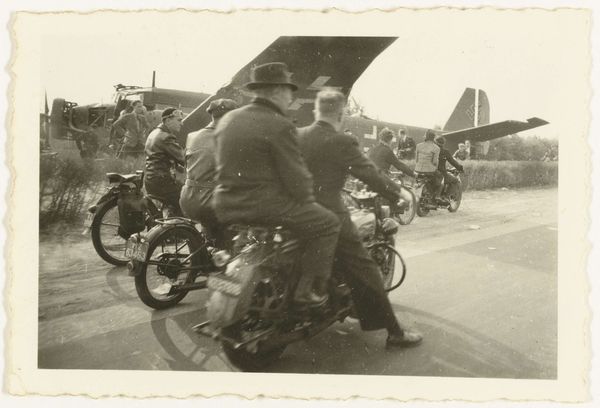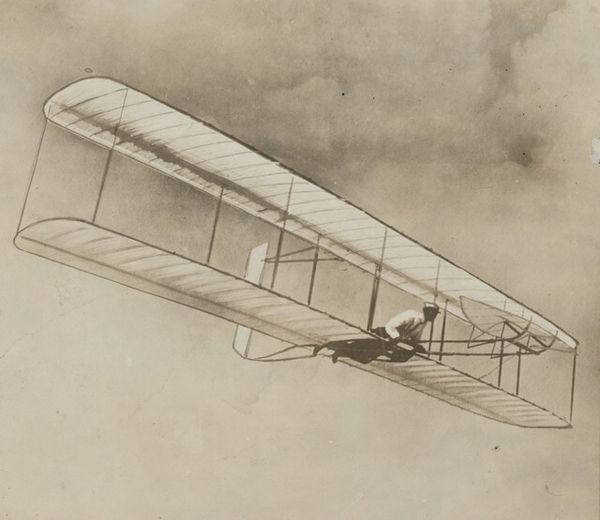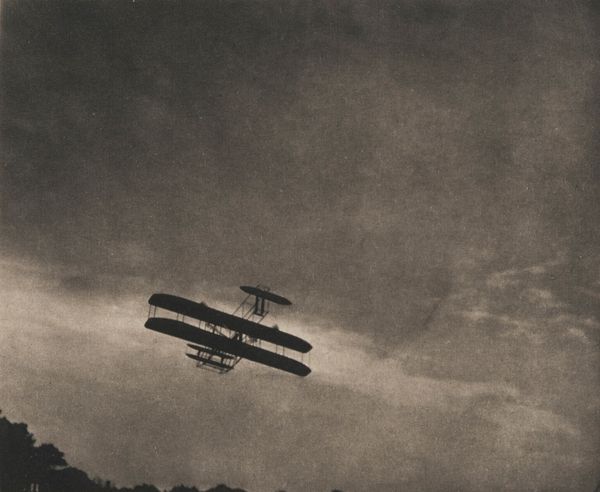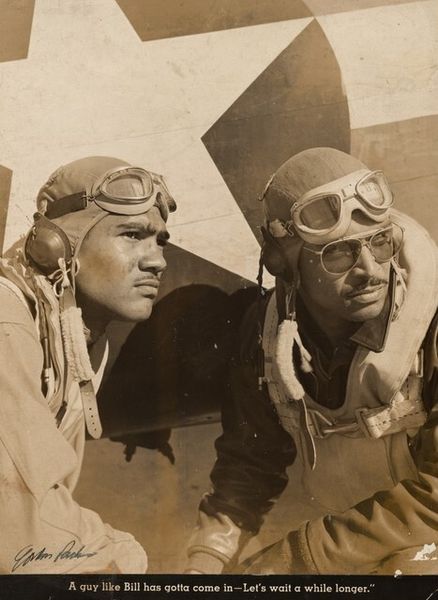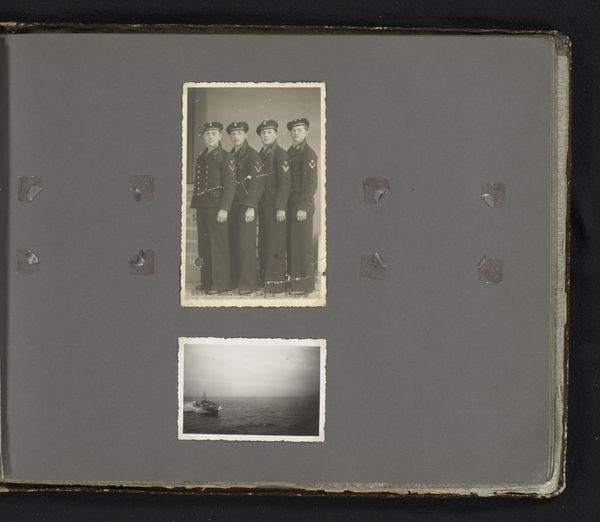
photography
#
portrait
#
photography
#
modernism
#
realism
Dimensions: height 60 mm, width 85 mm
Copyright: Rijks Museum: Open Domain
Curator: This is a photographic work, “Drie matrozen in een namaakvliegtuigje,” which translates to “Three Sailors in a Mock Airplane,” dating from 1940-1943. It's currently held in the collection of the Rijksmuseum. Editor: What immediately strikes me is the deliberate artificiality. It's a studio photograph meant to appear like an adventure, but it is so obviously staged. It's charming, but the construction is front and center. Curator: Indeed. It captures a particular sense of youthful aspiration amidst, I think, very turbulent times. There’s the visual trope of flight—freedom, escape, perhaps—counterpointed with the fixedness of the studio setting and their sailor uniforms. What is particularly thought-provoking to me is that it also reveals so much longing for travel in a time when free travel wasn't available to many. Editor: Absolutely. And when we think about the materiality of photography itself at that time, particularly within the context of war, paper was rationed and chemicals for developing film were more difficult to acquire. Even a staged photograph becomes a record not just of the individuals and their fantasies, but also of what was possible or accessible during war time. There are even small details like seeing both the Eiffel Tower and The Statue of Liberty in the background, reminding us of pre-war times. Curator: Exactly, these famous buildings in the backdrop give the picture almost dreamlike, idealized quality of travel. One wonders if the material scarcity impacted how the sailors engaged with the act of being photographed in this scenario. Were they hyper-aware that the image was made in a world of shortages and restricted possibilities? What meaning did the picture of travel hold for them knowing that at least in this image they were seemingly somewhere else? Editor: It raises questions about the photograph’s original intention. Was it pure escapism, or did it serve as propaganda to show national pride? The "Paris" scrawled on the side of the plane has significance that is hard to miss considering what was going on at that time. What I do know for sure is that something as simple as this picture opens to the very difficult realities surrounding it, adding layer after layer. Curator: A playful facade that allows us to look more carefully, perhaps. The symbols feel poignant even today. Editor: I agree. The more we look at the production of the image itself, the more complex its symbolism seems to become.
Comments
No comments
Be the first to comment and join the conversation on the ultimate creative platform.
